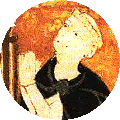"It Was Like A Tentacle But Not Exactly..."
 Coming to the end of Darkfall, I was surprised to find Koontz acknowledging homage in this story to another earlier influential pulp writer. The secret cognate of Darkfall's "police procedural" plot may be William Hjortsberg's 1978 novel Falling Angel, but Koontz leaves no question in this great libation poured to the gods of genre that Howard Philip Lovecraft is the Zeus of the "horror novel." After thwarting the Bocor Lavelle's attempt to slaughter his children, Lieutenant Jack Dawson watches with craven horror as the voodoo spirits of evil come to claim their holocaust from the depths of Hell:
Coming to the end of Darkfall, I was surprised to find Koontz acknowledging homage in this story to another earlier influential pulp writer. The secret cognate of Darkfall's "police procedural" plot may be William Hjortsberg's 1978 novel Falling Angel, but Koontz leaves no question in this great libation poured to the gods of genre that Howard Philip Lovecraft is the Zeus of the "horror novel." After thwarting the Bocor Lavelle's attempt to slaughter his children, Lieutenant Jack Dawson watches with craven horror as the voodoo spirits of evil come to claim their holocaust from the depths of Hell:Something snaked up from the depths. It was like a tentacle but not exactly a tentacle, like a chitinous insect leg but not exactly an insect leg, sharply jointed in several places and yet as sinuous as a serpent. It soared up to a height of fifteen feet. The tip of the thing was equipped with long whiplike appendages that writhed around a loose, drooling, toothless mouth large enough to swallow a man whole. Worse, it was in some ways exceedingly clear that this was only a minor feature of the huge beast rising from the Gates; it was as small, proportionately, as a human finger compared to an entire human body. Perhaps this was the only thing that the escaping Lovecraftian entity had thus far been able to extrude between the opening Gates--this one finger.
It represented a monster of vaguely anthropoid outline, but with an octopus-like head whose face was a mass of feelers, a scaly, rubbery-looking body, prodigious claws on hind and fore feet, and long, narrow wings behind. This thing, which seemed instinct with a fearsome and unnatural malignancy, was of a somewhat bloated corpulence, and squatted evilly on a rectangular block or pedestal covered with undecipherable characters.
They worshipped, so they said, the Great Old Ones who lived ages before there were any men, and who came to the young world out of the sky. Those Old Ones were gone now, inside the earth and under the sea; but their dead bodies had told their secrets in dreams to the first men, who formed a cult which had never died...hidden in distant wastes and dark places all over the world until the time when the great priest Cthulhu, from his dark house in the mighty city of R'lyeh under the waters, should rise and bring the earth again beneath his sway. Some day he would call, when the stars were ready, and the secret cult would always be waiting to liberate him.
the newly opened depths...It lumbered slobberingly into sight and gropingly squeezed Its gelatinous green immensity through the black doorway.... The stars were right again, and what an age-old cult had failed to do by design, a band of innocent sailors had done by accident. After vigintillions of years great Cthulhu was loose again, and ravening for delight.The slight difference: Lovecraft's Old Ones (Cthulhu) are based on his own skeptical evolutionary universe, whereas Koontz translates his Ancient Ones into his own hopeful modern anthropological and/or Christianized vision.
What can be said about Darkfall by Dean Koontz is this: it is an imaginative study in (pulp) influences.


0 Comments:
Post a Comment
<< Home